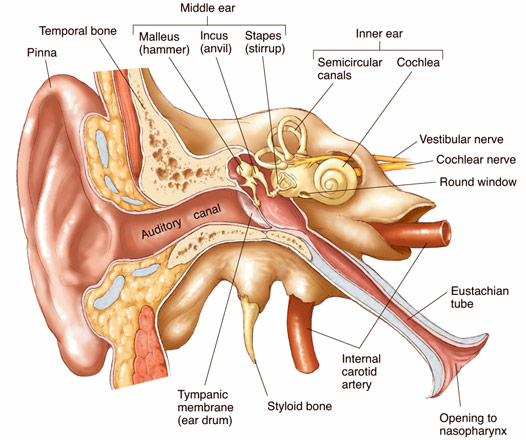How You Hear
 The Outer Ear
The Outer Ear
Hearing begins when sound waves enter the outer ear (the visible portion of the ear located on the outside of the head) and are channeled down the auditory or ear canal, a tube-like passageway lined with tiny hairs and small glands that produce earwax.
The Middle Ear
At the end of the auditory canal lies the ear drum (tympanic membrane) and the middle ear. Within the middle ear cavity is contained the ossicles, the three small bones, known commonly as the hammer, the anvil, and the stirrup. When sound waves hit the eardrum, it vibrates and, in turn, moves the hammer. The hammer moves the anvil, which moves the stirrup, transmitting and amplifying the vibrations into the inner ear. The middle ear functions to amplify sound, which is why significant hearing loss can result from any damage to any of its parts.
The Inner Ear
The inner ear consists of the cochlea and the vestibular (balance) system. The cochlea is the organ that converts sound waves into nerve impulses that the brain can understand. Those nerve impulses travel to the auditory centre of the brain, it is the brain that allows you to hear. It is in fact within the brain that we really hear, the auditory system is just a conduit that channels exterior sound to the brain. Hearing loss typically occurs when some part of this conduit is damaged.
Want To Know More About Your Hearing ?
Call 1800 848 888 or book your appointment on-line
Having used hearing aids supplied by you for a year and a half, I now feel competent in telling you how pleased I am, and to say they have brought a new dimension to my everyday living. In particular I appreciate the constant service and supervision given me by Mr .James Clay your audio technologist for my area. I am recommending your company to my friends and I complement you and your staff on your product.
L Coyle - Sligo

